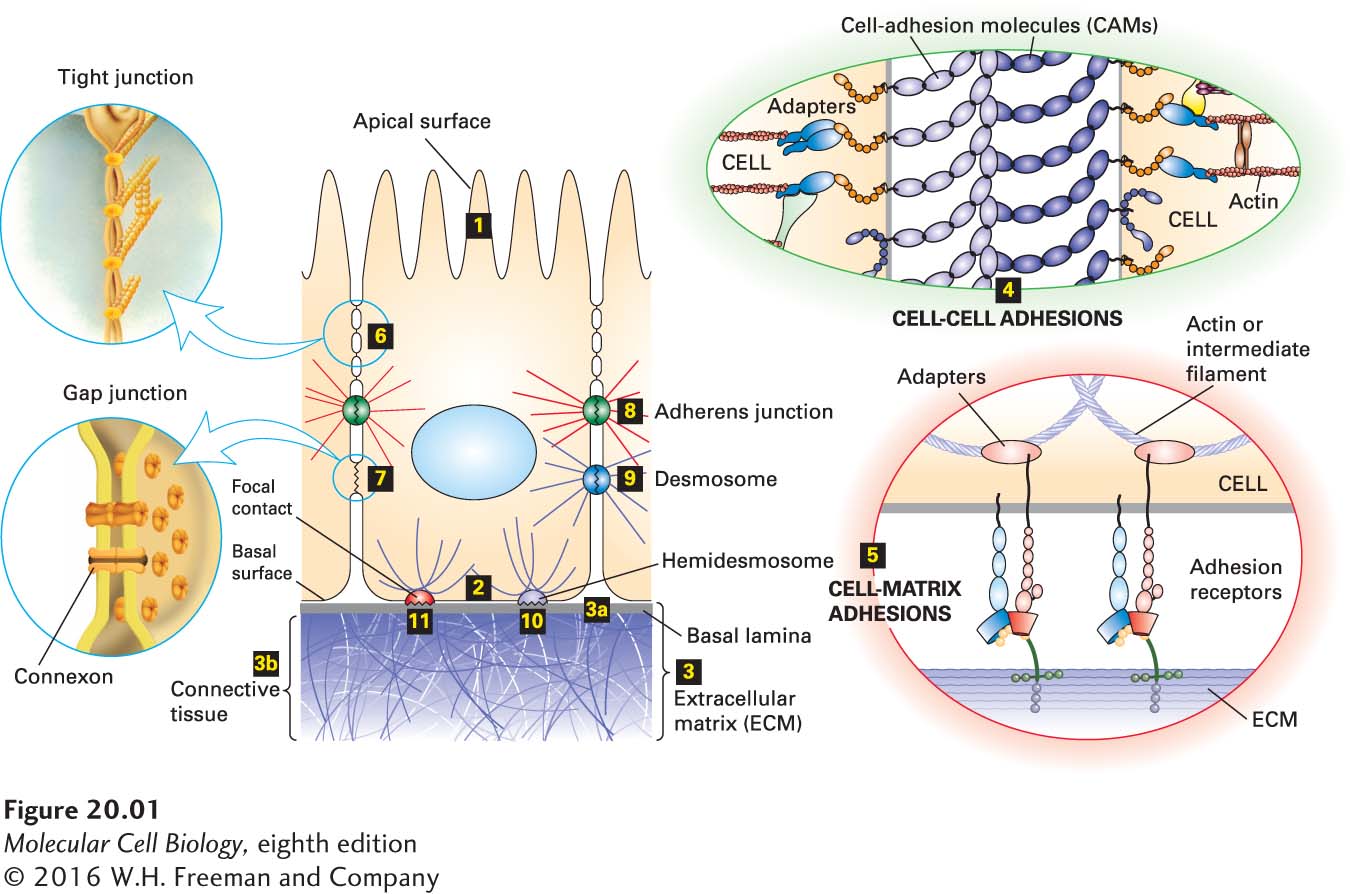
FIGURE 20- 1 Overview of major cell- cell and cell- matrix adhesive interactions. Schematic cutaway drawing of a typical epithelial tissue, such as in the inner surface of the intestines. The apical (upper) surface of each cell is packed with fingerlike microvilli (1) that project into the intestinal lumen, and the basal (lower) surface (2) rests on extracellular matrix (ECM). The ECM (3) associated with epithelial cells is usually organized into various interconnected layers— such as the basal lamina (3a), connecting fibers (not shown), and connective tissue (3b)—in which large, interdigitating ECM macromolecules bind to one another and to the cells (3). Cell- adhesion molecules (CAMs) bind to CAMs on other cells, mediating cell- cell adhesion (4), and adhesion receptors bind to various components of the ECM, mediating cell- matrix adhesion (5). Both types of cell- surface adhesion molecules are usually integral membrane proteins whose cytosolic domains often bind to multiple intracellular adapter proteins. These adapters, directly or indirectly, link the CAM to the cytoskeleton (actin or intermediate filaments) and to intracellular signaling pathways (as illustrated in Figure 20- 8 ). As a consequence, information can be transferred by CAMs and the macromolecules to which they bind from the cell exterior to the intracellular environment (outside- in) and vice versa (inside- out). In some cases, a complex aggregate of CAMs, adapters, and associated proteins is assembled. Specific localized aggregates of CAMs or adhesion receptors form various types of cell junctions, which play important roles in holding tissues together and facilitating communication between cells and their environment. Tight junctions (6), lying just under the apical surface, prevent the diffusion of many substances through the extracellular spaces between the cells. Through connexon channels, gap junctions (7) allow the movement of small molecules and ions between the cytosols of adjacent cells. The remaining three types of junctions, adherens junctions (8 and 4), desmosomes (9), hemidesmosomes (10 and 5), and focal contacts (also called focal adhesions; 11) link the cytoskeleton of a cell to other cells or to the ECM. See V. Vasioukhin and E. Fuchs, 2001, Curr. Opin. Cell Biol. 13:76– 84.
[Leave] [Close]